- Home
- About us
- Blog
- Shop
- Brands
- ALL Brands List
- Analog Relax
- Antipodes Audio
- Audio Solutions
- AudioByte
- AudioCircle
- Audiomica Laboratory
- Canary Audio
- Canor Audio
- Chameleon Audio
- Dan D'agostino
- Eversolo
- Ferrum Audio
- Fezz Audio
- Glanz
- HiFiMAN
- HoloAudio
- LAB 12
- LAIV
- LampizatOr
- Magico
- Mega Acoustic
- Monrio Audio
- Origin Live
- Phasemation
- Pink Faun
- PLiXIR
- Qualiton
- Reed
- Remton
- Revival Audio
- Riviera Audio
- Rockna Audio
- Sbooster
- Shelter
- Sigma Acoustics
- Signal Projects
- SOtM Audio
- SPEC
- Takatsuki
- Takumi
- Tedeska
- Tellurium Q
- Trafomatic Audio
- Tsakiridis Devices
- Volumio
- Sales
- Second Hand Deals
- Account
Holo Audio MAY DAC KTE – L1 – L2 (R2R – DSD1024)
Price range: 4.800,00 € through 6.500,00 €
The true peak of Japanese craftsmanship. The Holo Audio May DAC is a high-end, discrete R2R DAC featuring dual mono architecture, advanced linear compensation for precise audio reproduction, and support for DSD1024 and PCM 1.536MHz. It offers exceptional sound quality with proprietary anti-jitter technology, an enhanced USB module, and multiple digital and analog input/output options.
It is made with the most High-Quality components like Caddock resistors and Vishay Z-Foil resistors for optimal performance as well as Gold-Plated Circuit Boards and Connectors Ultra-low Noise Floor: Less than -140dB. This DAC is acclaimed for its natural, analog-like sound and innovative engineering, making it a top choice for audiophiles seeking uncompromised best of the best performance.
See the “Version Differences” tab to Understand the Differences between the models!!!
Excluding speakers & certain second hand items we offer:
- Free Shipping in Greece for orders over 100€!
- Free Shipping in Europe for orders over 1000€!
- Free Shipping Worldwide for orders over 3000€!
- Buy NOW with up to 24 Interest-Free Installments! (All Products are Eligible)
Description
Holo Audio MAY DAC = “The possibility of…”
The May DAC is here! over 3 years waiting and tremendous R&D to achieve a new level of performance and sound quality that sets a new standard. Ultimate endgame DAC. Natural Analog sound with no compromise. Having the best measurements of NOS R2R Dacs. And delivering our intoxicating sound signature that HoloAudio is known for.
This new DAC “May” is the design of a new generation, it’s HoloAudio’s finest technology all designed by Jeff Zhu, the engineer behind these great products. It’s a full discrete R2R type of audio decoder and does not have off the shelf-DAC chip! This is a bespoke custom-designed core DUAL MONO DAC modules that are truly a breakthrough with technology for any DAC chip today. The May is here to achieve new heights, new dynamics and simply a full spectrum of audio to please the aural senses.
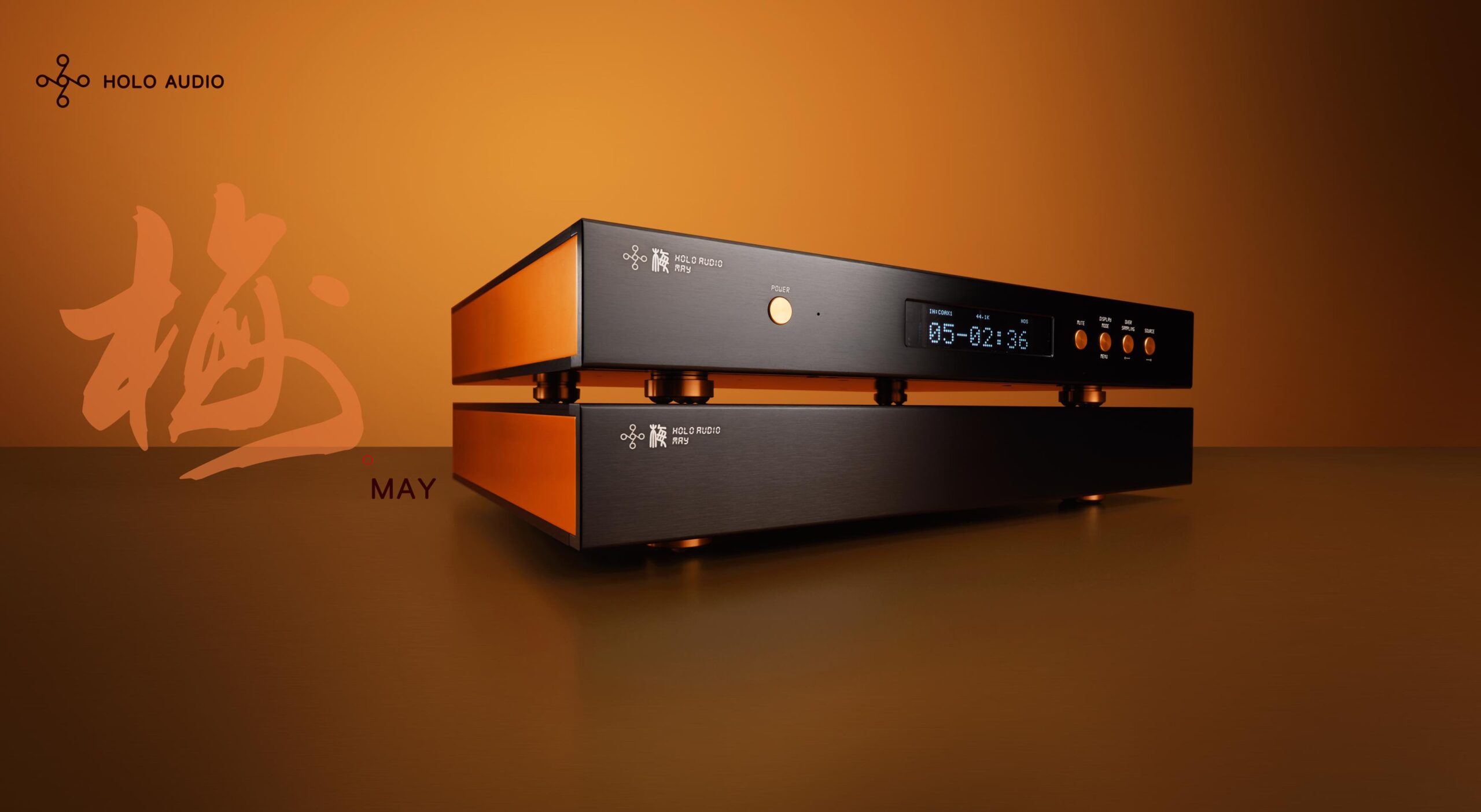
The May DAC (all three models) will also support DSD1024 native and PCM 1.536MHz output! Theoretically it can do DSD2048 and PCM 3.072Mhz however is untested at this time. Also, we have worked hard to reduce the common click noise with all dacs when switching from DSD to PCM. This sound click sound has been reduced significantly with a special circuit design. The May DAC has the new and exclusive USB Enhanced module (L2 and KTE ONLY) which has our FPGA with the new Titanis 2.0 and custom firmware to improve USB Eye Pattern and reduce latency to near zero as well as reduce jitter to very very low levels. The USB module has completely new code written to optimize performance and reduce latency significantly. Low frequency performance (-40db) is also improved. The “enhanced” USB xmos module is twice as powerful/capable as the one that is used in the Spring2.
New improved power supply circuit with high performance multi stage regulation circuit using Rubycon ZLH caps, Panasonic FC, Vishay Caps or L2/KTE models with our exclusive HoloAudio Branded Caps (KTE model unique custom proprietary caps to replace Vishay caps)

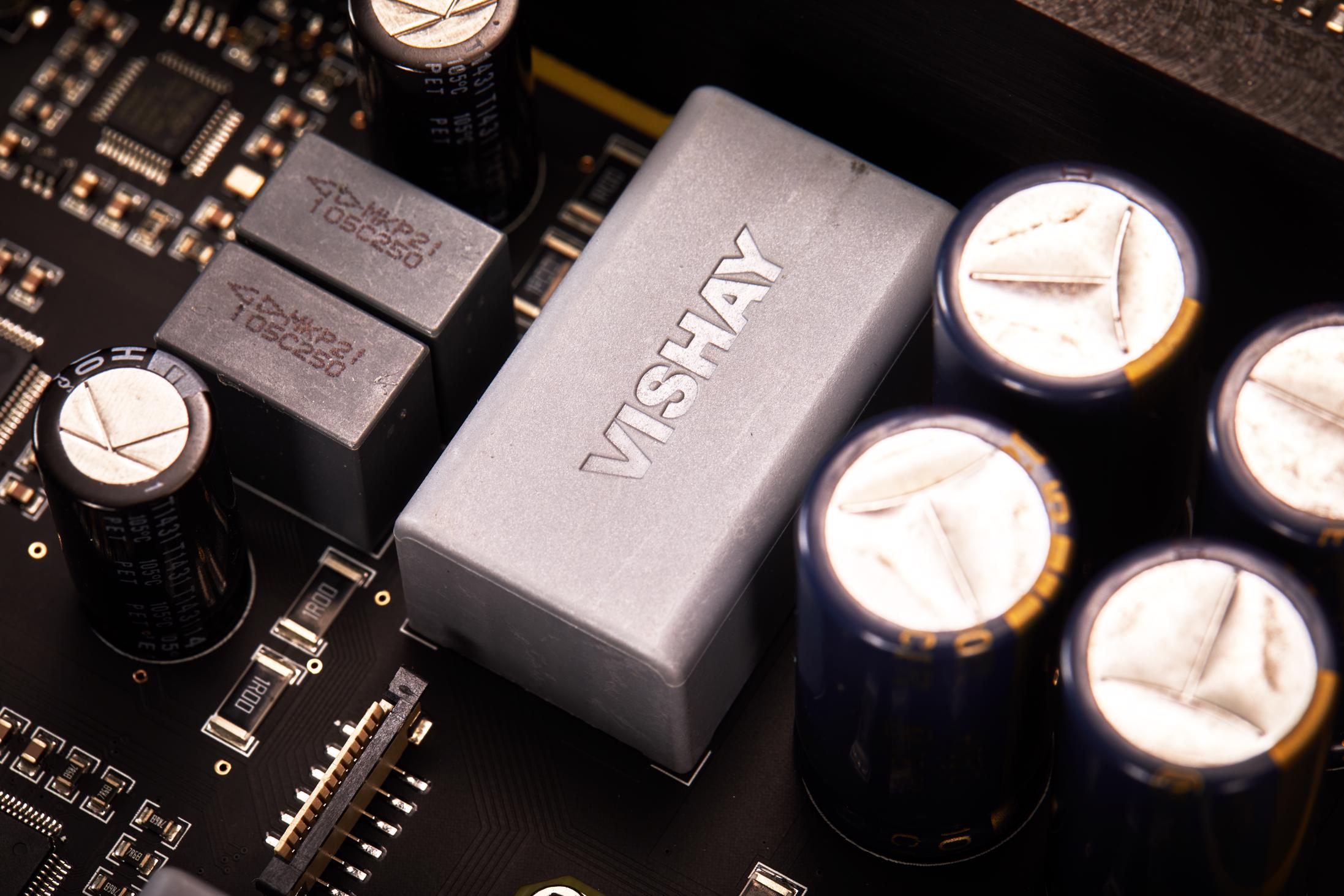
We are no longer using common LVDS chipset and are now using a custom 4way circuit that isolates each line which further improves sound quality. such as the MCLK is isolated from data line and this improves jitter spec. Also there are TWO i2s ports in the May dac. Each one can be individually configured pin outs to support all i2s products on the market.
The May and KTE version of the May DAC also is with a CNC machined aluminum remote control! Standard with all three models.
The KTE version has OCC copper wire replaced with 1.5mm pure silver wire. 1.5mm Silver wire is soldered direct to the pcbs with highest grade audio solder. Silver Rhodium Faston connectors used at IEC input.
The May is a DUAL mono DAC. so there is a dedicated Dac Module for Left Channel and a dedicated Dac Module for Right Channel. Also each channel is individually powered by it’s dedicated Otype FLATWIRE transformer found in all three models. We have found after careful testing this new transformer type outperforms ALL transformers we have ever tested to this date. Near zero leakage, improved dynamics and overall spectacular performance. They are handmade for this dac specifically and delivery world class performance you would expect.
May DAC also has a new screen on the front that appears the same as the Spring2 on initial glance…. Font size is bigger than Spring2 but smaller than Spring1. Also you can see the CD track-time information is displayed when using spdif inputs!!! This is done by extracting additional data from SPDIF. This a part of CD red book standard but nobody notices this and often forgets this cool feature or doesn’t know how to extract the data!. This will lead a fashion for other DAC developer to support this feature… customers will surely love this feature albeit subtle. The screen is much better contrast and viewing angles and one of the first things one may notice.
The May also has a front power button now! It’s been a request by many customers and gone are the days of a good old reach around to get the dac to be turned on! As mentioned before above… The DAC has a soft start circuit!! So don’t fret, it takes a moment for it to charge up and pull power without blowing the fuse!! It actually uses the same exact value of fuse that our Spring1 and Spring2 has! But two transformers! If we don’t have a soft start a couple issues can happen… one being a blown fuse from power surge, and another simply having possible pop noises. No chance of these things happening. We have carefully designed the circuit to have a zero compromise design.
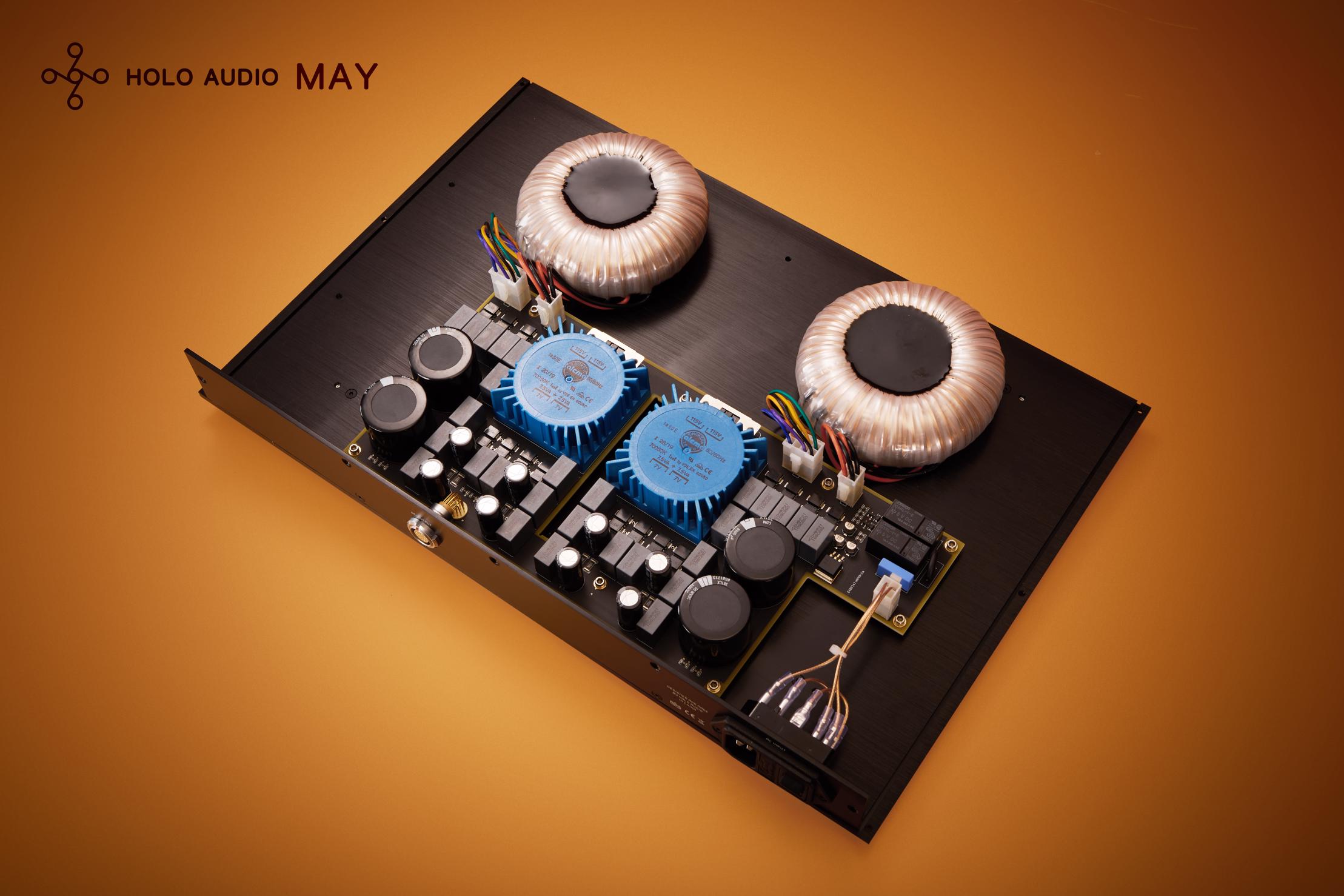
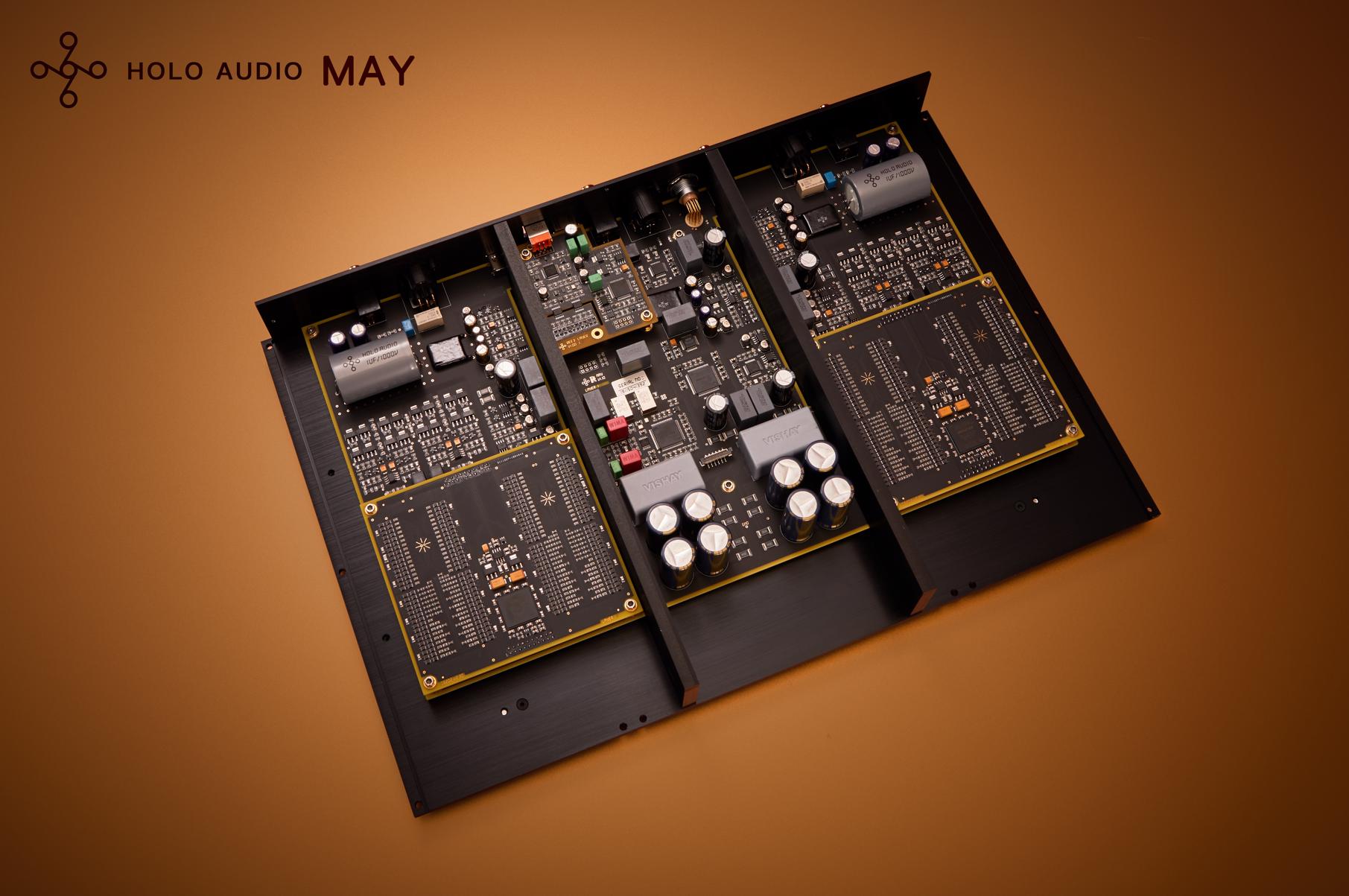
Notable features of May DAC
- The new generation of linear compensation technology solves the accuracy errors caused by resistor tolerance, after compensation, reaching a variance of 0.00005% tolerance accuracy.
- Proprietary anti-jitter technology that provides a full amplitude of anti-jitter without increasing noise floor and other undesirable effects.
- Based on this new generation of technology, May “梅” can provide a SINAD of >115dB and a dynamic range of >130dB, which represents the performance limit reached by today’s most advanced R2R architecture DAC.
- Using the ultimate performance of PLL+FIFO technology, provides 0.1Hz Third-Order low-pass ability to inhibit jitter. It also uses a high-performance femtosecond VCXO as the PLL clock source. Under the premise of being almost immune to the front-end jitter, it can also lock up to 1.5us-2us @ 1KHz signal with high jitter.
- Dual Mono DAC L/R channels are independently powered by their own dedicated transformer in the PSU chassis. This provides better channel separation and more accurate sound stage.
- Official Support USB and I2S up to DSD1024 and PCM1.536MHz sample rate.
- The USB interface uses proprietary firmware with ultra-low latency, highly reliable data transmission, ideal USB eye pattern measurements that contributes to 2-4 times higher performance than official firmware.
- Two sets of independent HDMI-I2S input interfaces are provided, and each set of I2S has a four-way independent circuit, as opposed to standard LVDS chip, making I2S clock signals subject to lower interference and lower jitter. In addition, each group of I2S inputs can be configured with specific pinout configuration, making it compatible with most of the HDMI-I2S digital devices on the market.

The Most Unique DAC
Kitsune HiFi carefully chooses products that we want to offer to our customers and be unique and/or stand out from all these audio supply stores. Jeff Zhu is a very talented engineer and is the brains behind HoloAudio. Some say he is the man behind the curtain and he has certainly impressed us with his knowledge and his newest line of products that surely will leave you impressed too! The May DAC is the most recent product and is capable of DSD native on an Discrete Resister Ladder DAC!
This May DAC is capable of DSD1024 native and actually running on his bespoke discrete ladder DAC! This is a unique custom build discrete resistor network DAC with linear compensation and advanced architecture based on R2R however we don’t refer to it as R2R since the design is far superior. This is our second discrete DAC that has linear compensation and this allows for ultimate music reproduction accuracy. Dual MONO R2R DAC Module resistor network with advanced architecture for PCM w/Linear Compensation. Also Dual Resistor Ladder network with optimized architecture specifically for DSD!
We will be offering the first May DAC’s in the USA and the KTE/Kitsune Tuned Edition is no longer just exclusive to us. We have licensed the build as being the ONLY authorized modded edition of the May DAC by HoloAudio. This means our authorized dealers will carry our KTE May! And if you buy from a dealer you will get support from that particular dealer. Many may continue to choose Kitsune HiFi and will receive our excellent customer service that we are well known for.
The Sound Characteristic’s of Holo Audio’s May
One of the strong points of the spring is the spatial sounds stage presentation. It’s very wide and precise. It never sounds congested like many DACs. The high end is very detailed and never harsh sounding. It has the R2R goodness that many have come to know and love. R2R has almost a cult like following and this DAC will surely become a sought after DAC.
Everything comes effortlessly for this DAC. Bass is layered and textures, quite full and present without ever masking over the sweet mid tones that are produced. One special thing about the May is its amazing voltage regulation circuitry that better than 0.2uV output noise! This along with the FLATWIRO-core transformer helps regulate the purest power which translates to audio clarity and accurate reproduction. It must be heard to appreciate and come to love its sound. If you must have the best and nothing compromised then we would suggest the KTE or Kitsune Tuned Edition.
What is so special about this DAC? A Discrete R2R DAC with linear compensation… What is this?
There’s an additional R2R resistor network in the May DAC, that compensates the main R2R ladder. It works like trimming, but trimming is to change the resistor value. This additional R2R ladder is digitally controlled and will accurately compensate the resistor tolerance reaching a variance of 0.00005% tolerance accuracy.
For example, the MSB of 16 bits should have the value of 32768, but due to tolerance, it represents 32700 in real world results. Then that additional R2R ladder will compensate 68 into it. Thus it now becomes 32700 + 68 = 32768. What this means is that it’s likely the most precise Discrete DAC on the market with near flawless linearity, lowest THD and highest SNR of any NOS DAC. The sound is simply something you must experience to fully realize how special this DAC is. It’s a patented technology exclusive to HoloAudio. KitsuneHiFi is also HoloAudio USA and proud to bring you this DAC.
May’s Input and Output Interface
- Digital input interface includes
- Enhanced USB (ground isolation) + Titanis 2.0 circuit + KYCON industrial High retention USB Connector (improved impedance spec) – Proprietary inhouse firmware w/ ultra low latency performance. Ultra low noise voltage regulation
- RCA coaxial
- BNC coaxial
- AES/EBU
- optical fiber/Toslink
- I2S (HDMI) – improved ultra high performance 4way custom circuit (NOT traditional LVDS chip anymore) backwards compatible
- I2S-2 (HDMI) – improved ultra high performance 4way custom circuit (NOT traditional LVDS chip anymore) backwards compatible
- All digital input interface supports DSD (DOP mode).
- Analog Output interface: single-ended, balanced.

May DAC R2R structure and design + Input/Output Stage
Modern and popular delta-sigma type DAC differs from R2R within one clock analog value can recover a sampling point, and the delta-sigma is used to represent an analog signal after passing through oversampling and high-speed digital switching 0 and 1.
In comparison, the conversion structure of R2R is most direct and pure, but delta-sigma is essentially a digital chip, high-speed digital signals 0 and 1 switch to the low-pass filter to process the analog signal and this process is prone to various problems, produce digital sound (digititus) and also in the super-sampling process will inevitably cause some ringing and distortion. But DAC R2R structure requires high-precision resistor network which the cost can be very expensive. And the digital delta-sigma DAC chip in comparison is very low cost.
Patented R2R technology. This is the first discrete DAC that has Linear compensation and this allows for ultimate music reproduction accuracy. Dual R2R ladder network with advanced architecture for PCM, and Dual Resistor Ladder network with optimized architecture for DSD!
I/O stages: There is an Op Amp used for input stage and discrete component used for the output stage. The discrete output stage is working in pure class A. It’s BiPolar Junction Transistors, direct coupled.
A common question we get… “Why do you use an Op amp at the input of the DAC?”
The input stage with an opamp is a good choice. It has a paired transistor input by the nature it is manufactured. But an opamp for the output stage is limited due to it’s size and the thermal capability. Also, no one will offer an opamp with class A output as it’s efficiency is so low. So an opamp used as input and discrete output combined together will have an advantage. It doesn’t mean that all discrete is not good. Actually, if we need to achieve enough low distortion. It needs at least 30-40 transistors. Which not only will it be huge and waste of space but it will also be too costly. I mean, to beat the opamp’s performance, a simple discrete architecture is not possible, although an all discrete design looks beautiful.
We use opamp+discrete architecture for the amp parts of May. Opamp is used for the input stage, discrete is used for the output stage. All the transistors in the opamp are in the same die, then it is matched by nature. This is key because by now, there are few choice for low noise matched pair transistors but an opamp has plenty of them inside. The Output stage is discrete because it generates a bit of heat. We need a class A output stage. So you can see May is very hot compared to other DACs. An opamp output simply can’t handle that power.
The true balanced DUAL MONO circuit design
XLR is using all of the circuit and RCA is just using half of them. The balanced output has better performance (THD, noise) and also better common mode rejection rate. If you’re listening environment contains interference, either from AC power or from EMI/RF then you will find a full balanced system can really help significantly.
With diverse and flexible sampling mode conversion mode
- NOS mode: has no digital oversampling, the raw data is directly converted to analog. Because digital oversampling will produce time-domain distortions, such as ringing, NOS avoids these problems. Generally, NOS mode’s other performance indicators have a significant impact, but the Spring 2 is designed to allow top performance while in NOS mode.
- OS mode: PCM is oversampled to PCM at a higher frequency, DSD is oversampled to DSD at a higher frequency, and then digital is converted to analog.
- OS PCM mode: in either PCM or DSD the data will be oversampled to PCM and then digital is converted to analog.
- OS DSD mode: in either PCM or DSD the data will be oversampled to DSD and then digital is converted to analog.
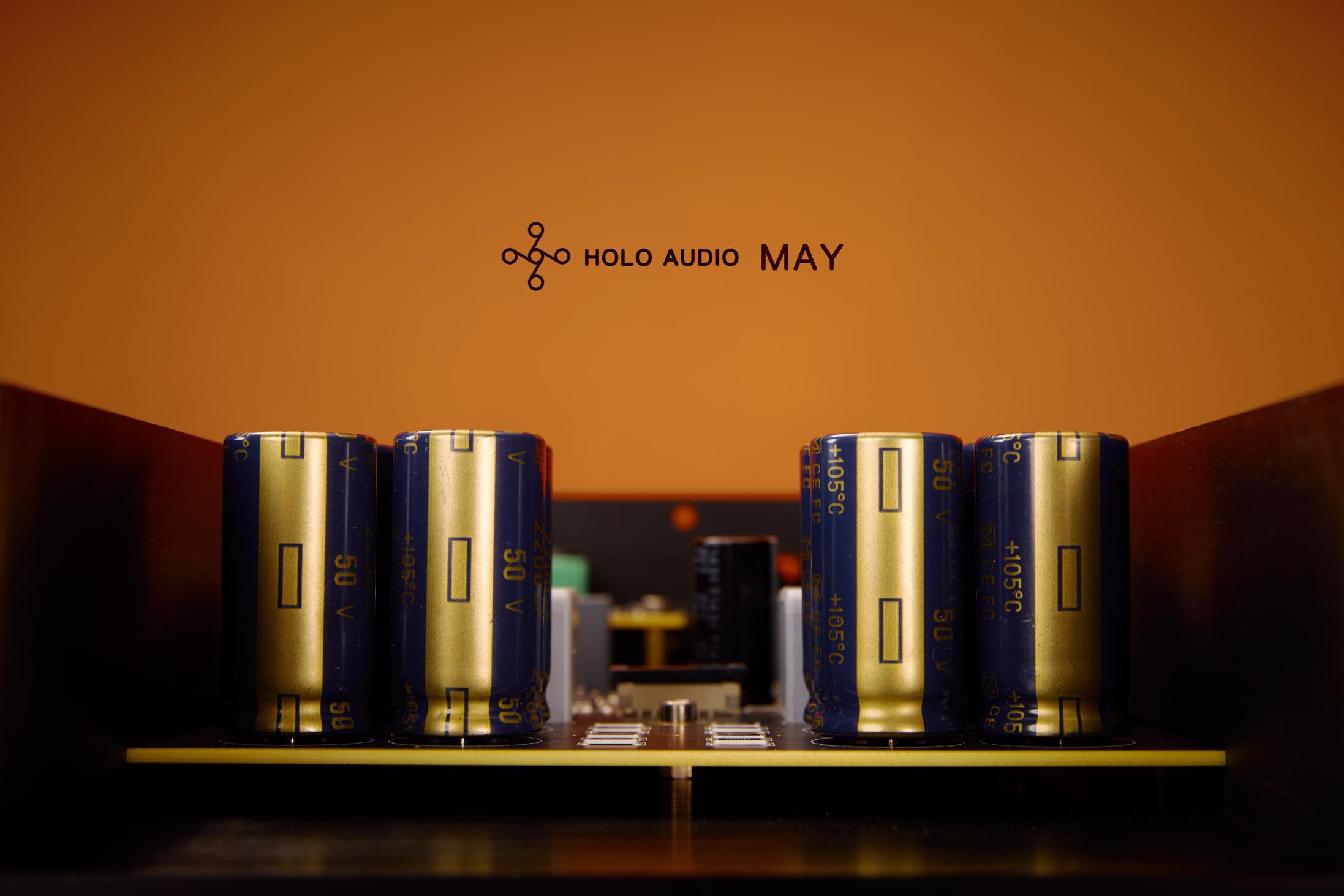
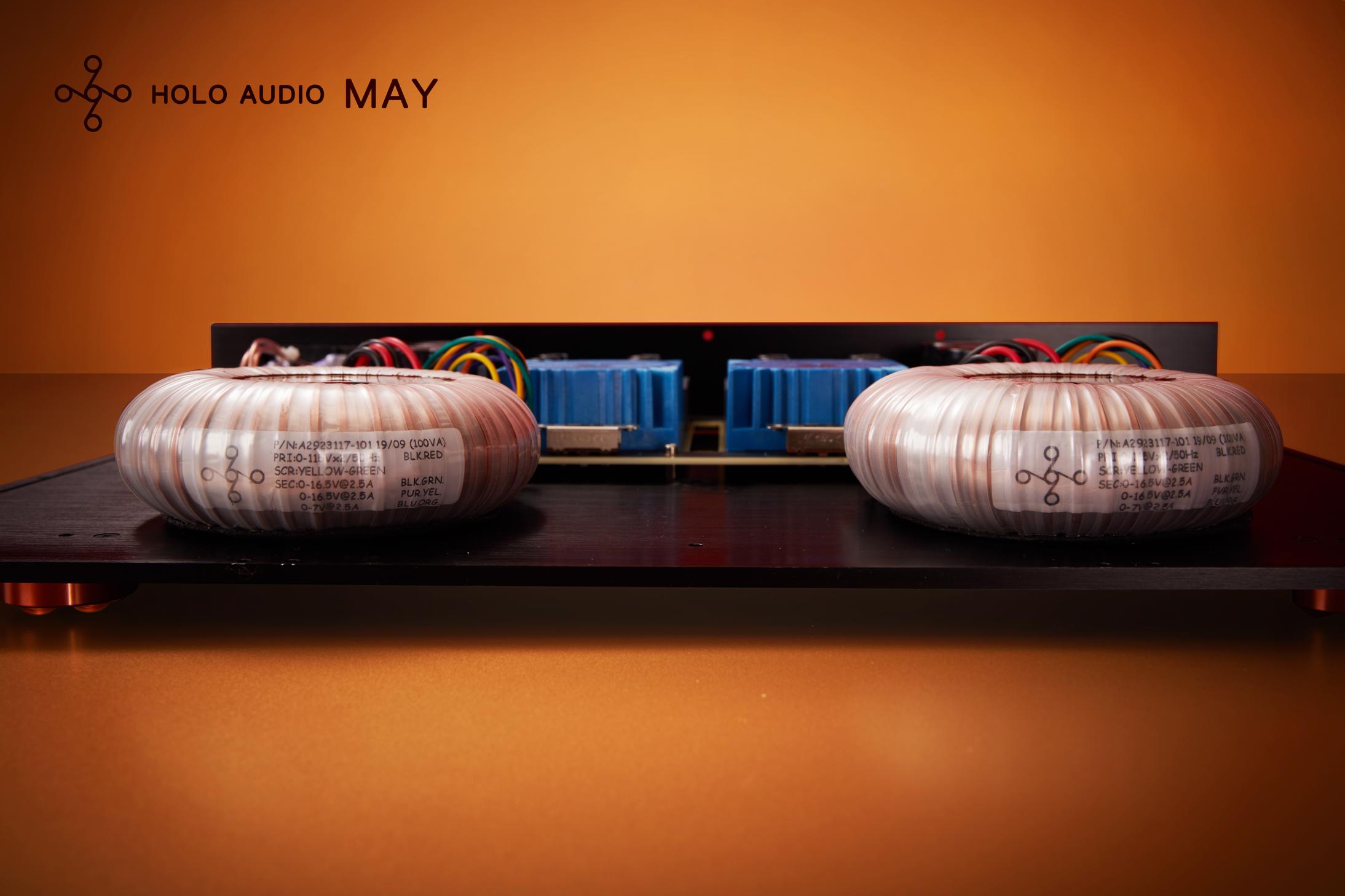
Technical Information about Holo Audio’s Custom PLL Circuit
Now the May is implemented with femto clocks, and also new discrete ultra high performance voltage regulators. It has an advanced PLL (phase lock loop) circuit that is completely custom built for ultra high performance anti jitter performance. Even the highest levels of jitter are near eliminated which delivers world class performance.
Using Crystek VXCO clocks that will take any incoming digital signal an reclock it to perfection! This feature can be enabled or disabled to test and prove it’s performance is truly spectacular. Note: this is NOT an off the shelf PLL, but it’s truly the most powerful PLL found in a DAC. Or at least to our knowledge it’s the most powerful PLL ever..
S/PDIF usually is a not a good protocol because it’s very old and outdated! It was designed in 70s together with CD with Sony and Philips. As you may know, It encodes the data signal together with clock signal so it can be transferred by a one-core cable. It makes the cable easy to source, but to encode the data to clock at the transmit side and decode the clock from data at the receiving side, creates jitter.
Toslink is a fiber glass version of Spdif. So Toslink adds even more jitter while doing electronic to photo and photo to electronic translation. So people will see clearly that I2S is usually better than SPDIF because I2S has 4 separate signal, 3 clocks 1 data. So it does not have encoding-decoding stuff thus has a better jitter performance. This is important to know this.
A common technique to improve the clock signal from SPDIF is PLL. A PLL is to use a local clock generator to track the source clock. You know jitter is actually a time deviation problem. For example, the fist period frequency is 44101Hz and the following second period is 44099Hz. Thus it has 2/44100 jitter. A PLL is to smooth the time deviation of clock. So after the PLL, it can be 44100.9-44099.1(this is a weak/poor performing PLL). Or it can be 44100.1-44099.9(this is a strong performance PLL). Usually, a SPDIF chip, like AK4118A, has an internal PLL. AK4118A is good chip compared to other Spdif receiver chip and it marks 50ps jitter. It’s the best we can get from a commercial chip. But it’s far from ideal, and definitely not enough for a HiFi standard we are implementing in the May dac. So we need a significantly stronger performing PLL. If the PLL is strong enough, it can smooth the 44101-44009 source clock to 44100.00001-44009.99999(very close to ideal 44100-44100)
But to make a stronger PLL is not easy, it’s actually incredibly difficult. First you need a powerful local clock source. A fixed clock can’t be used because it need to be adjusted to follow source clock rate. A common solution to use a VCO(voltage controlled oscillator). VCO is made by resistors, capacitor and inductors. The cost is low but performance is not so great. So, a better solution is to use VCXO(Voltage controlled crystal oscillator), it uses crystal as oscillator and crystal is a far better oscillator. The VCXO we used in May is Crystek’s CVHD-957. This the best VCXO we can get now.
The second hard problem is, the data need to be synchronized with clock. For example, the source has 44101-44099 clock from Spdif, that also mean it has 44101 samples in first period and 44099 samples in second period. So a good local 44100-44100 clock will have to throw away one sample in first period and lack one sample in second period. An easy fix to it is to use digital filter to smooth the data and it calls ASRC, but ASRC actually modified the data. So after ASRC, the data is modified thus not bit perfect anymore. And digital filter can also generate time domain problems like ringing artifacts. So, a digital filter is not a good way to solve this problem, or you can say, it solve a problem by introduce another problem.
May uses a fifo buffer to store the extra one sample in first period and release it in second period. So it has no harm to data. The difficulty for this design is how to manage fifo buffer. It can be a problem when you have a long-term jitter. And long-term jitter is actually called low frequency phase noise in a frequency domain point of view. To explain it easily, let’s take a example, a long term jitter can be like this, 44101-44102-44103-44104-44105-44104-44103-44102-44101-44100-44099-44098-44097-44096-44095-44096-44097-44098-44099-44100. So you see, it will have 25 extra sample in first ten periods, so the fifo buffer need to able store enough of them and release it in next 10 periods.
So, as a result, May’s PLL’s corner frequency is set to 0.05-0.1Hz in 3-orders. Than means it can reduce a 10s long term jitter by 90%, 1s period jitter by 99%, 0.1s period jitter by 99.9%…… That maybe the most powerful PLL in this industrial. And the most important is, it won’t lose data, it can still locking the source while huge jitter comes in. When you compared other similar PLL in the industrial, you can see it simply unlock the signal when huge jitter comes in. So, in that way, it simply stop you from listening, it tells you there is a problem but not solve it.
DSD is natively supported on this Discrete Resistor Ladder DAC
HoloAudio is the world’s first to support DSD natively on Resistor Ladder DAC, so far the only one. This is not the DSD converted to PCM before digital-analog converter, but directly by the discrete components of the DSD digital to analog converter. Supported currently on MAC (DOP)and Linux (DOP), and Windows/PC (Direct Native and DOP).
Please note, the word ‘R2R’ is the name of a kind of architecture of resistor ladders. This architecture requires less resistors yet still is capable to deliver more than acceptable performance. Most DACs in the industry use this architecture. The DSD Dac module resistor network of May Dac does not use R2R architecture for the DSD, more specifically it uses a very specific architecture which is optimized to perform DSD data to analog. So to be entirely accurate the DSD part of May Dac is using resistor ladders, not R2R.
Info on Red Nano Fuse type used in KTE May Model
Single crystal nano fuse
Specification: 5X20mm @2A(220v) or 4A(110v)
Withstand voltage: 250V (T) slow speed
Features: This product is complicated in process, special materials can not be made, this fuse is 100% pure handmade!
Tip: Input in different directions, the tone is different. Can try different directions
This fuse structure is relatively complicated, it is handmade, so the cost is not cheap, the structure is crimped, the contacts are firm and reliable, plated 24K gold, non-chemical gold. The fuse is made of imported single crystal silver-copper alloy. After nano-processing, note that the fuse is directional after nano-processing. The inner filling of the quartz sand is filled with nano-graphite, and the graphite has ultra-high conductivity and high anti-interference characteristics. The sound is beautiful, soothing and strong in layering. This is the flagship product of high-end fuses so far.
Fill the fuse with 2 heads of quartz sand for good shock absorption and arc extinguishing. In the middle is graphene, which has the advantages of ultra-high conductivity and anti-interference. The fuse is a single crystal silver-copper alloy containing 10% precious metal, treated with nanographene, and stranded with a single crystal silver.
The fuse cap is stamped from 99.99% 4N copper, one end is plated with 24K gold and one end is plated with sterling silver. Increasing the conductivity and the speed of the power supply make the fuse and the socket highly accessible.
The fuse is firmly pressed by a large one and two small caps made of 4N copper. This process protects the fuse in the middle of the fuse. The fuse and the cap are in good contact and the contact is firm, which can prevent the microphone effect. Reduce the oscillation of current passing, making the sound quality more pure and the image more stable.
The inside is filled with two quartz sands, and the middle is filled with nano graphene. Graphite has super high conductivity, high anti-interference and other characteristics, and the sound is beautiful, soothing and strong. It has great benefits for sound quality and security, but it can only be handmade.
The ceramic tube has anti-resonance and eliminates the effect of the microphone sound.
The fuse is made of a single crystal silver-copper alloy, and a very fine single crystal silver wire is wound to correct the sound. After nano-treatment, it has excellent two-end extension, transient response, dynamic and musical sense.
Fuse Type for L1 and L2 May Model
Shurter Gold fuse type
2A SB 5x20mm (220v) and 4A SB 5x20mm (110V)
Specifications
| Attribute | Value |
|---|---|
| Dimensions per Chassis (WxLxH) | 430 mm x 300 mm x 55 mm |
| Additional Height for Machined Feet | 12 mm (for each part) |
| Stacked Height (2 Chassis) | 430 mm x 300 mm x 67 mm |
| Weight | 18.0 kg (approximately for both chassis) or 39.68 lbs |
| Power Consumption | 60W |
| Accessories | Remote Control (NO Batteries Included) + DC Cable (1m Length) |
| Digital Input Interface |
|
| Analog Output Interface | Single-ended, balanced |
Videos
Version Differences
Kitsune HiFi provides 3 versions of the May DAC. Below are the three levels, and KTE being their Flagship model with all options:
KTE Version
- Top Tier Model with all the options
- Hand selected DAC modules
- KTE exclusive Caps
- HoloAudio Caps
- Copper KTE “fox” logo emblem on top of the DAC
- DAC Module exclusive cover/shields
- Enhanced USB Module w/Titanis 2.0 circuit
- Silver wiring
- Red Nano Fuse
- Many more mods/improvements
- Comes with remote control, DC cable, and USB Cable
L2 (Level 2) Version
- Moderate spec’d version
- Includes upgraded HoloAudio Caps
- Does not have KTE Caps
- No DAC module covers
- Enhanced USB Module w/Titanis 2.0 circuit
- Copper wiring
- Standard Schurter Gold fuse
- Comes with remote control, DC cable, and USB Cable
L1 (Level 1) Version
- Base Model
- Does not have HoloAudio Caps
- Does not have KTE Caps
- Basic specs/components
- Standard USB Module
- Copper wiring
- Standard Schurter Gold fuse
- Does NOT come with remote control, DC cable, and USB Cable
Differences in Table Format
| Feature | KTE Version | L2 (Level 2) Version | L1 (Level 1) Version |
|---|---|---|---|
| Model Tier | Top Tier | Moderate Spec’d | Base Model |
| Copper KTE “fox” Logo Emblem on top of DAC | Yes | No | No |
| DAC Modules | Hand selected | Standard | Standard |
| KTE Exclusive Caps | Yes | No | No |
| HoloAudio Caps | Yes | Yes | No |
| DAC Module Covers/Shields | Yes | No | No |
| USB Module | Enhanced w/Titanis 2.0 | Enhanced w/Titanis 2.0 | Standard |
| Wiring | Silver | Copper | Copper |
| Fuse | Red Nano Fuse | Standard Schurter Gold Fuse | Standard Schurter Gold Fuse |
| Additional Mods/Improvements | Many | None | None |
| Remote Control | Included | Included | Not Included |
| DC Cable | Included | Included | Not Included |
| USB Cable | Included | Included | Not Included |
The following are added to the KTE Version of May:
- 100VA DUAL O-type (not Toroid) FLATWIRE (not roundwire) 6N Copper custom hand-made audio transformers. (All models)
- All copper wire is replaced with 1.5mm pure OCC silver wire. Only KTE model
- Hand-selected DAC modules to have the best measurements compared to averages. Higher dynamic range. Only KTE model.
- CNC Black/Copper shield DAC Module Covers on each module with laser-etched KTE logos. Only KTE model.
- Replaced IEC inlet connectors with pure silver/rhodium plated faston connectors at the IEC inlet. Only KTE model.
- Fuse is upgraded with world-class Red Nano fuse with gold/silver and graphene and quartz filtering materials. Only KTE model
- Standard Vishay caps are replaced/upgraded with KTE capacitors. Unique only to MAY KTE – KTE Caps to replace Vishay on the L1/L2 models (we have done extensive testing and these prove to provide intoxicating voicing and are beyond subtle improvements over L1/L2)
- Custom-made HoloAudio 1000V 1uF caps (replaces standard Mundorf Evo silver/gold caps)
- Enhanced USB module with Titanis 2.0 circuit
- Special Kitsune Tuned Edition branding inside and out (pure copper Kitsune fox emblem on top panel) + remote control / KitsuneHiFi VIP service, English support, and manuals/software
Note: all models share/include same Flat wire Otype transformers, custom PLL with crystek vcxo clocks, all copper and black chassis color, remote control, dc cable, ac cable. These are the shared features.
You must be logged in to post a review.



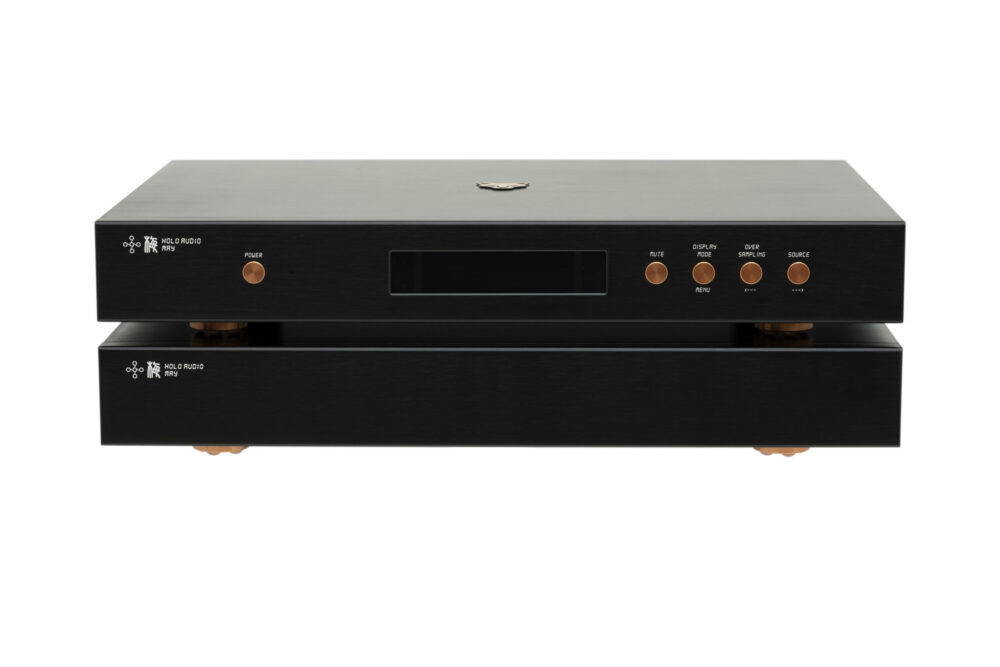

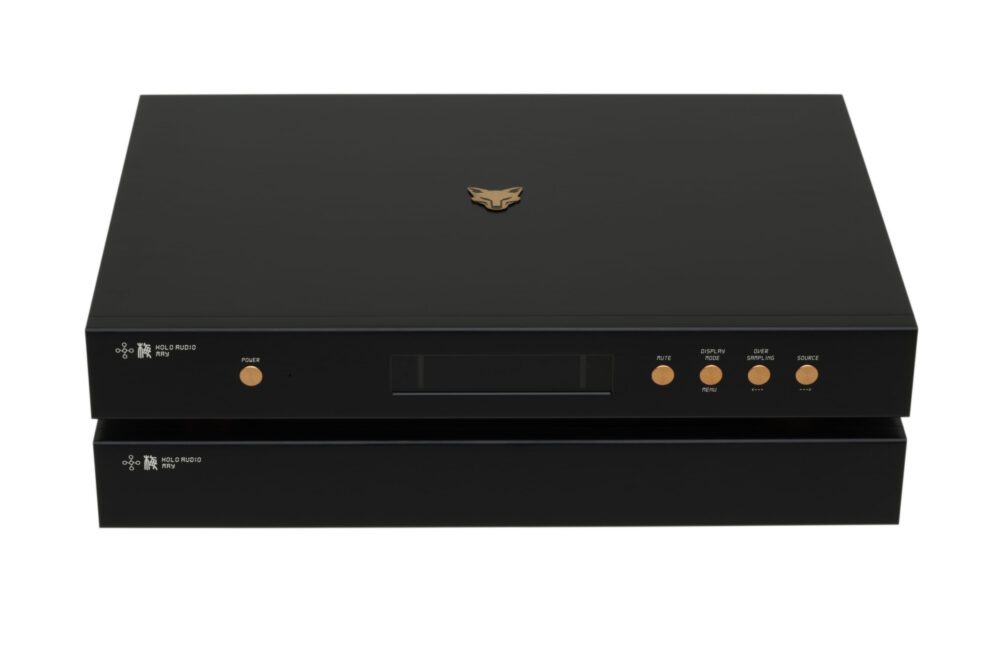
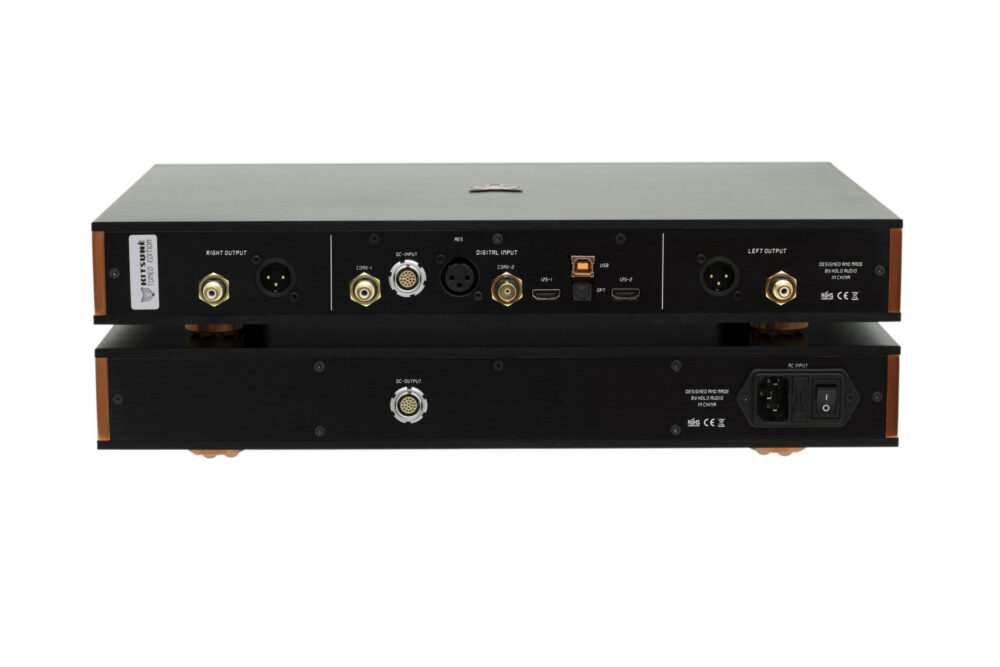
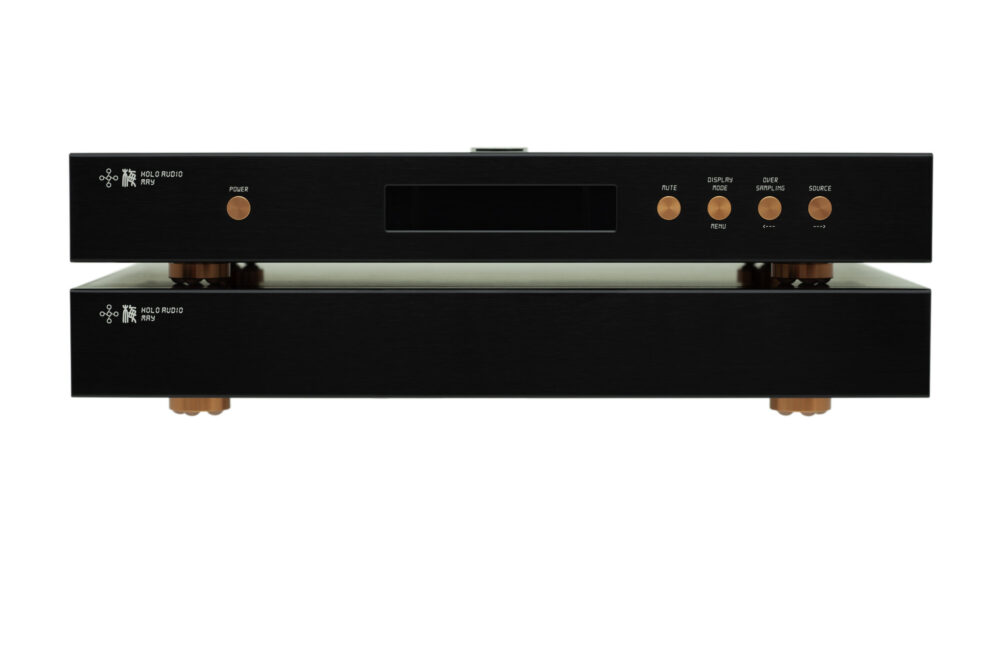
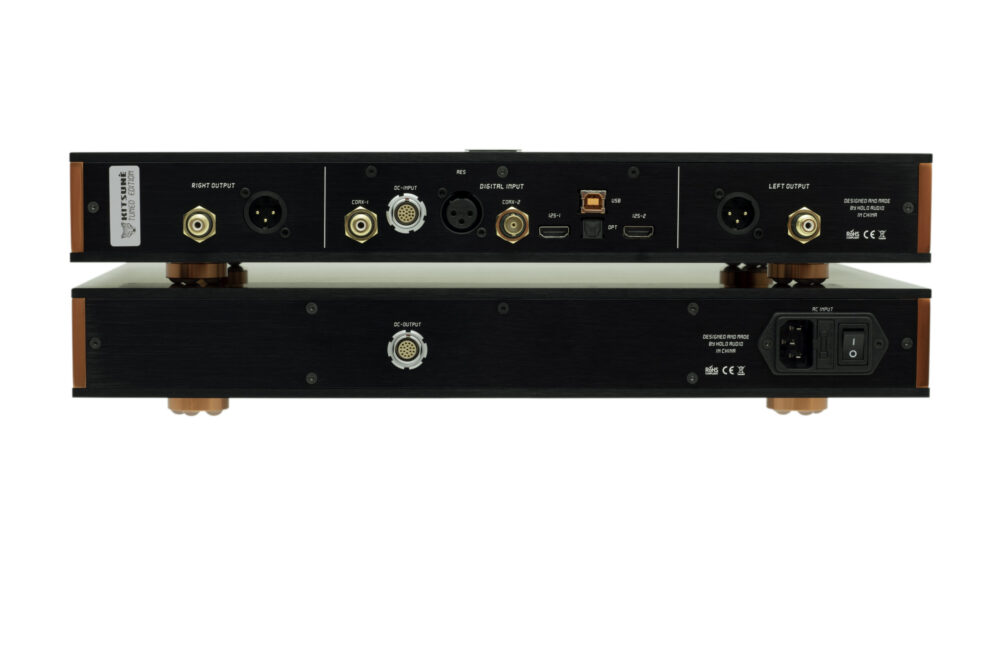
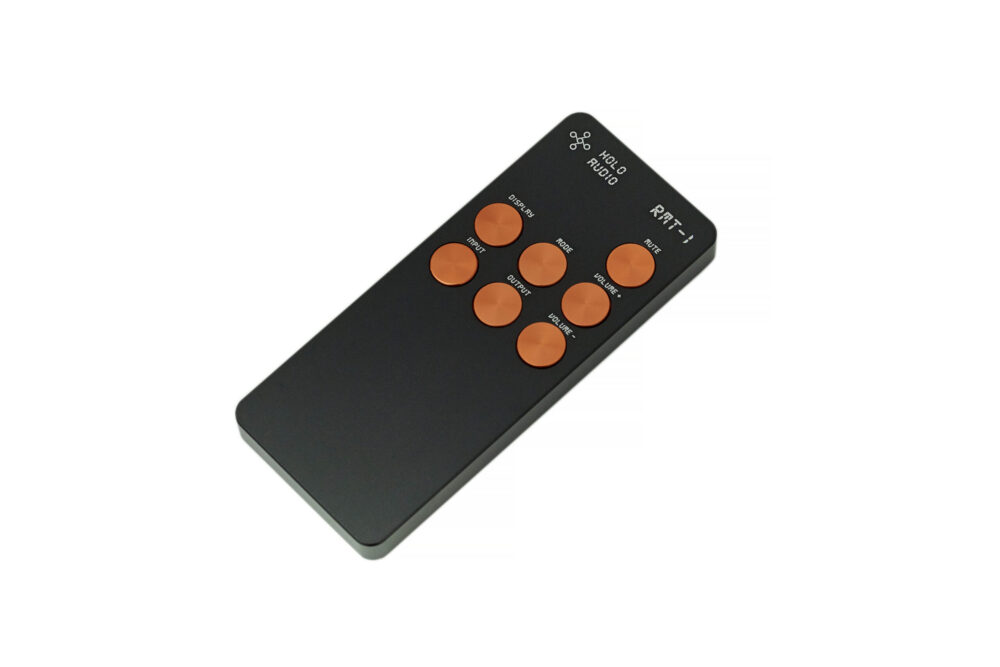

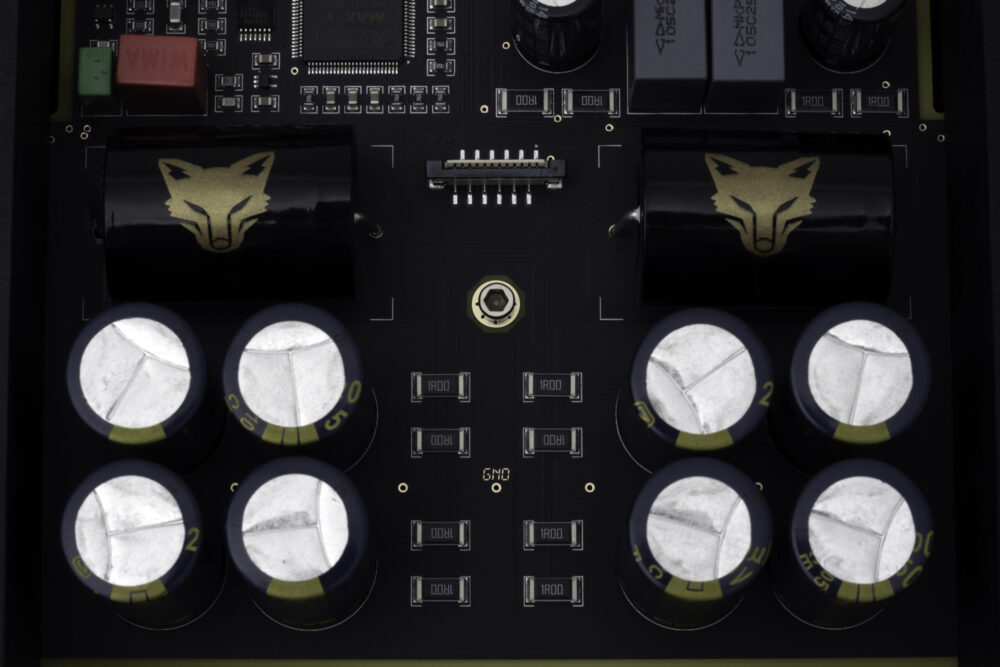
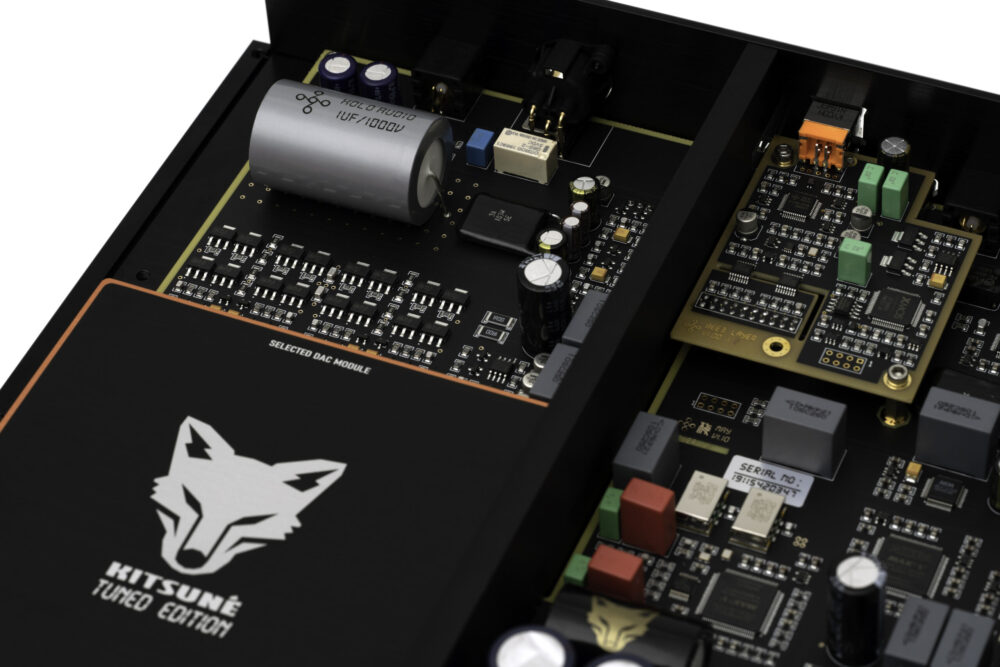
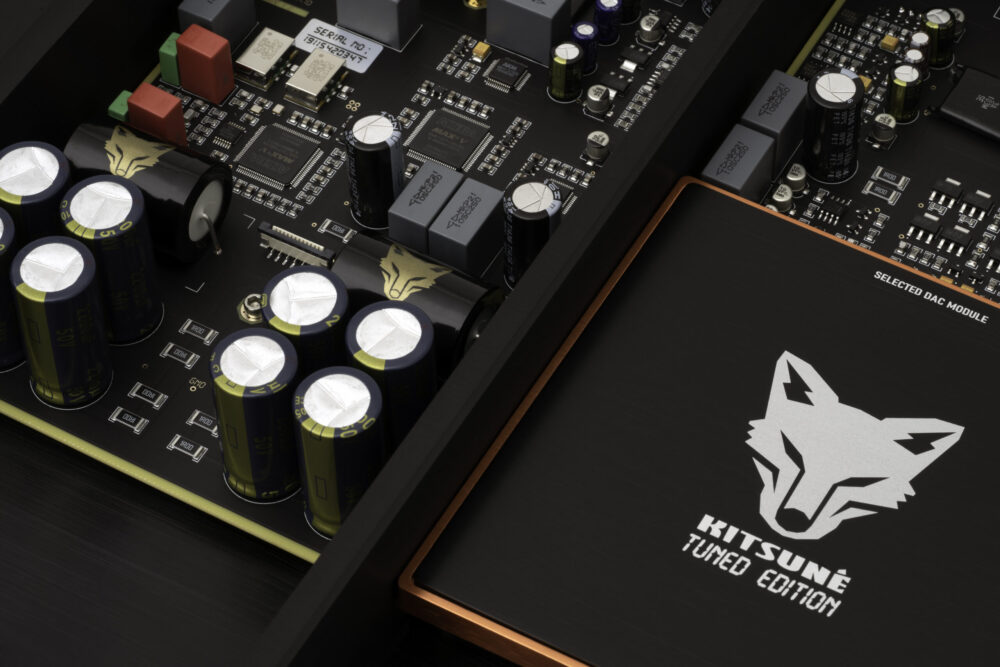
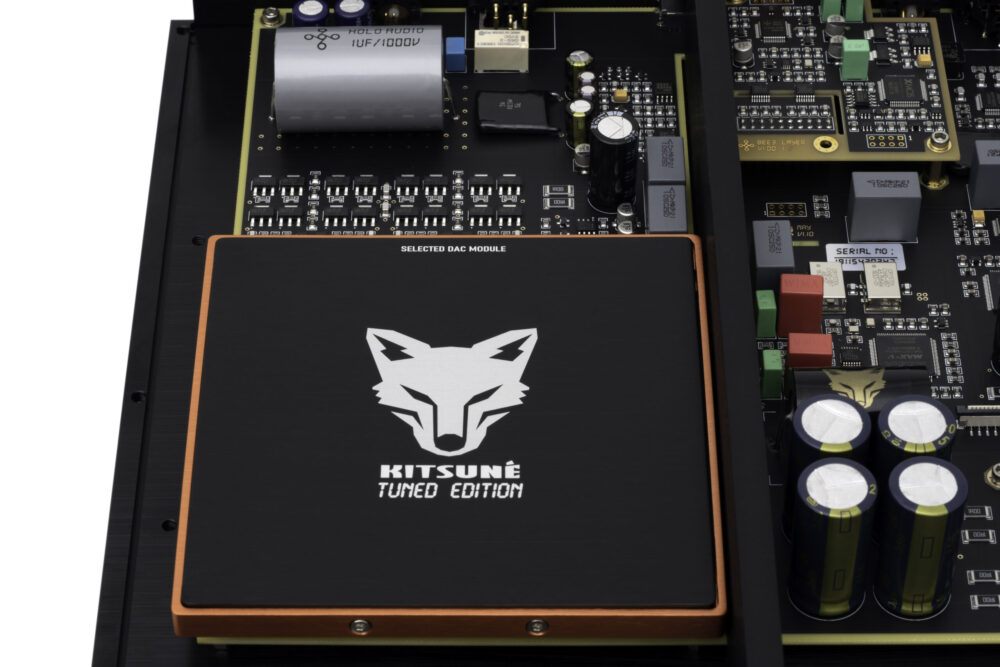
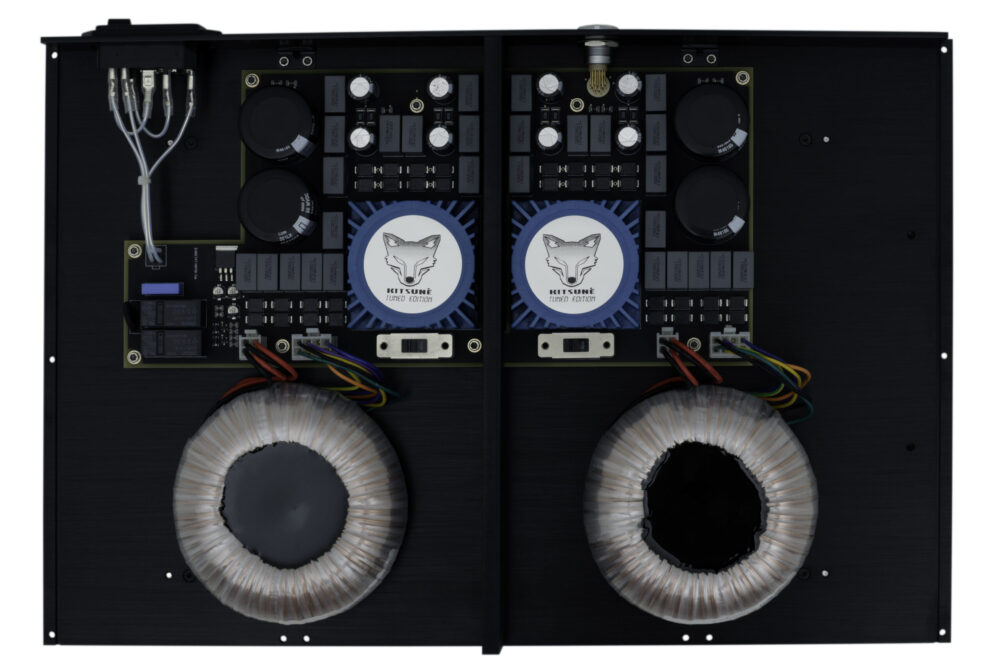

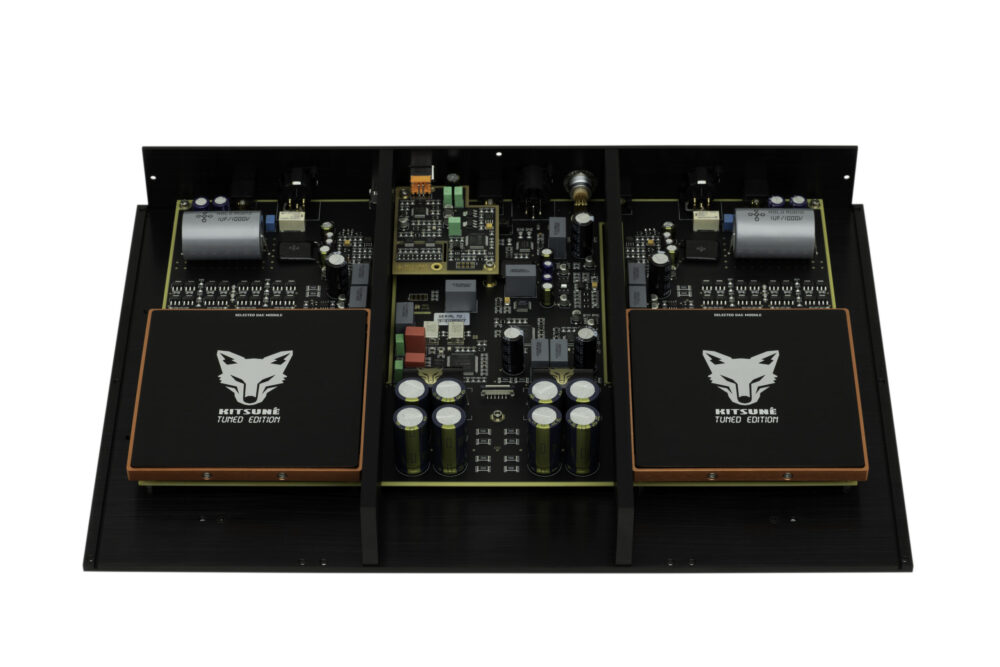
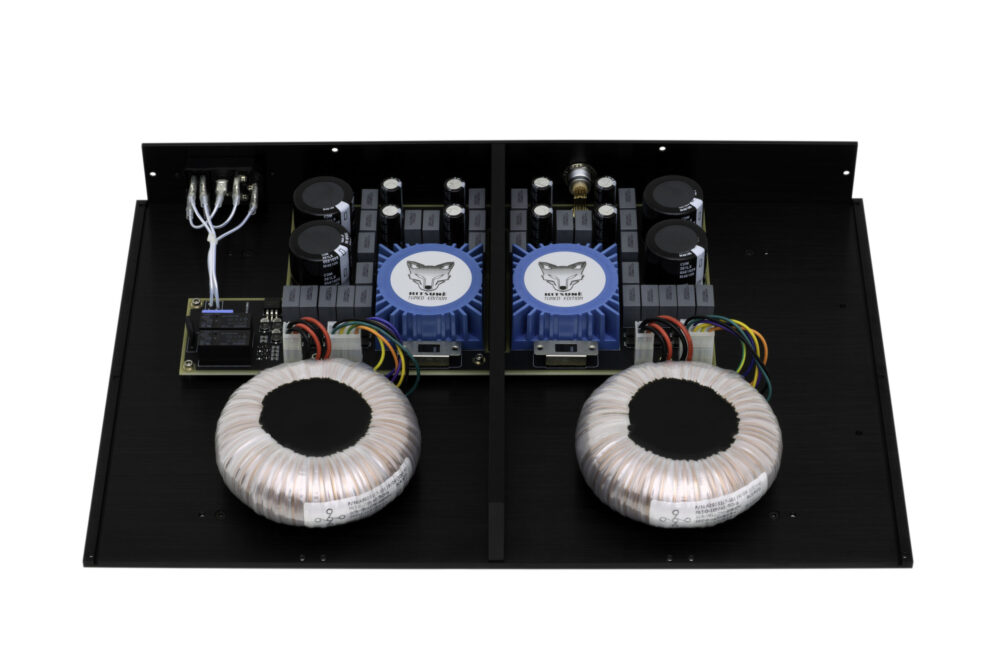

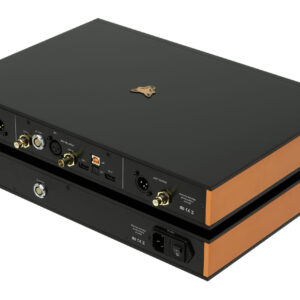
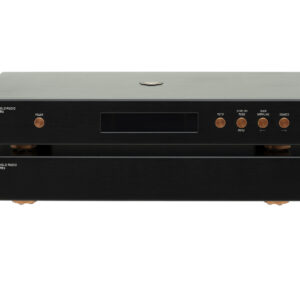
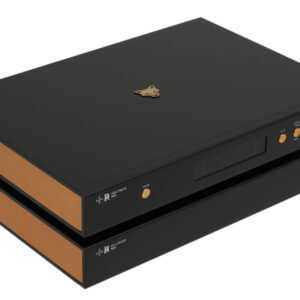

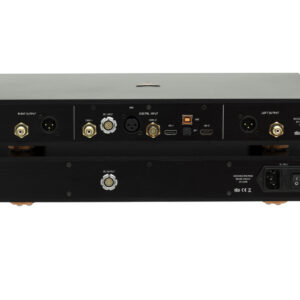




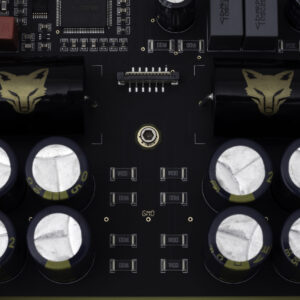



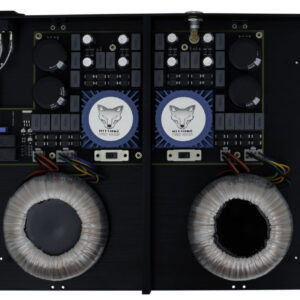

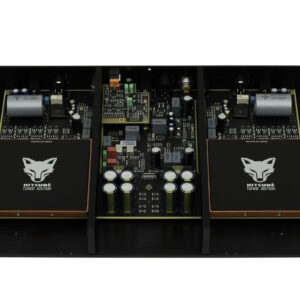








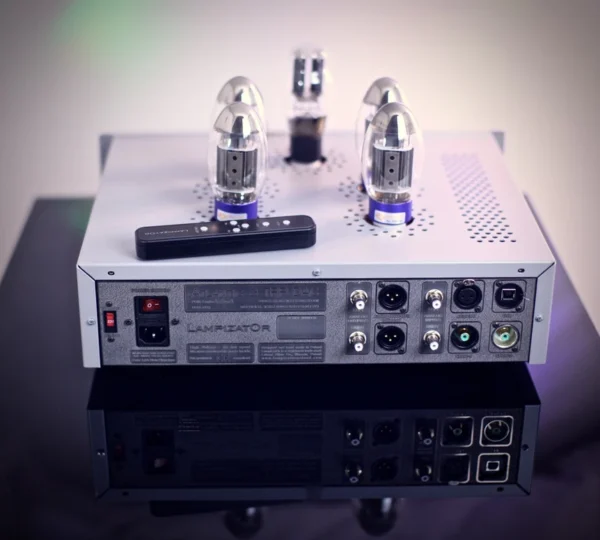






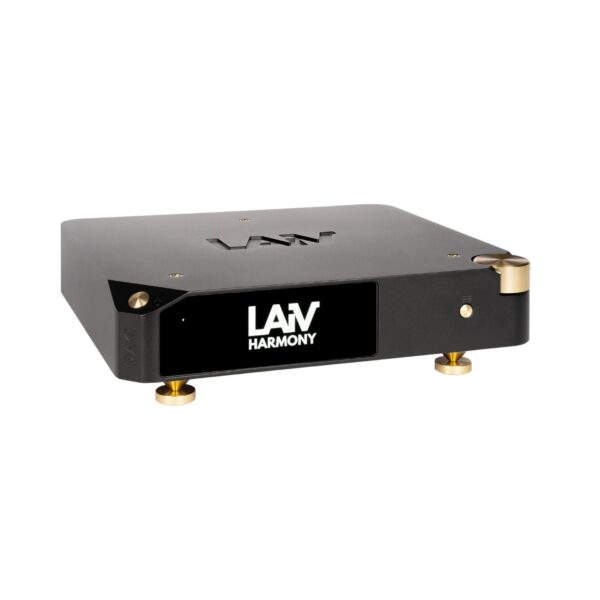


Reviews
There are no reviews yet.